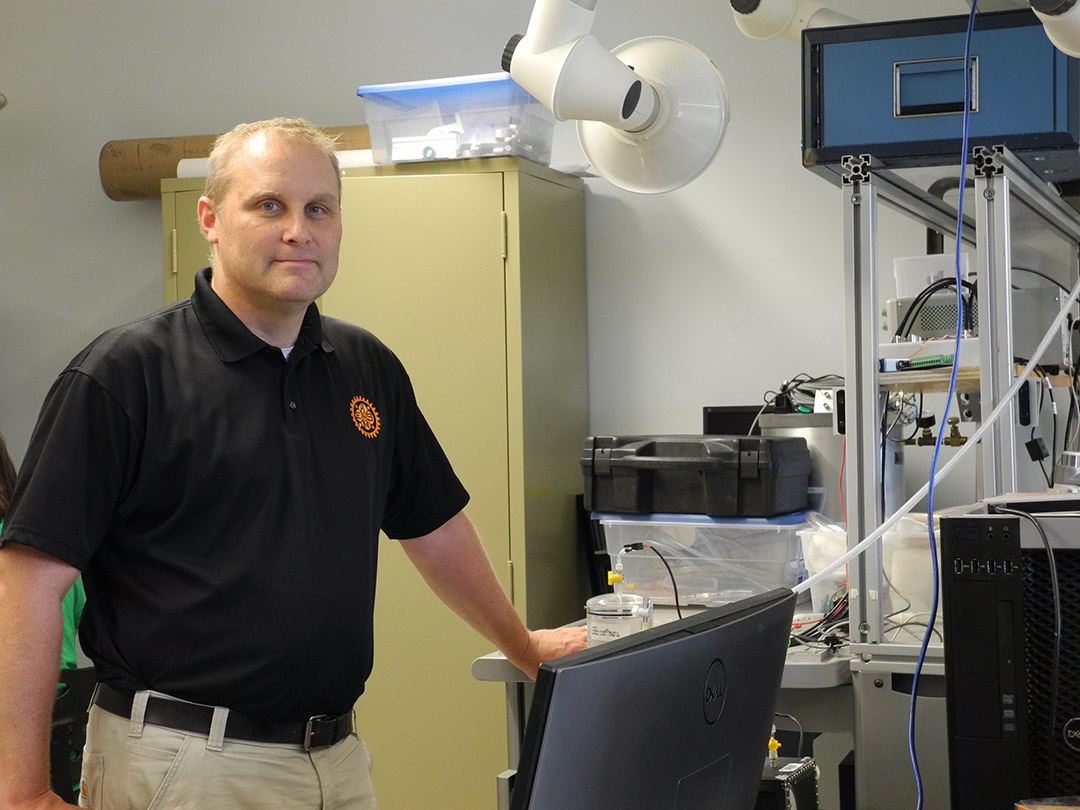Engineering faculty and cardiologist collaborate to design heart pump assessment prototype
Use of AI and improved sensor technology could better identify implanted device state-of-health
Provided
Jason Kolodziej, a mechanical engineering faculty-researcher, will work with a multidisciplinary team to improve heart pump state-of-health through AI and advanced sensors.
Researchers at Rochester Institute of Technology are developing technology that will be able to determine the lifespan of a heart valve with more precision.
“It’s almost like a check engine light on your car,” said Jason Kolodziej, an associate professor of mechanical engineering. Kolodziej recently received a National Institutes of Health grant to develop a non-invasive monitor to evaluate the state of health of ventricular assist devices (VADs), lifesaving heart pumps used to maintain heart function for individuals living with heart failure. These pumps can extend survival for many years.
The three-year project consists of a multidisciplinary team of cardiology, computer science, and engineering experts. They are working toward developing an advanced stethoscope equipped with more sophisticated sensors and diagnostic tools that can use machine learning to both assess VAD performance as well as act as an indicator for a patient’s health.
VADs are most commonly implanted in the left ventricular area of the heart to assist with blood flow. It was developed as a “bridge” for patients awaiting heart transplants, though many receive a VAD as lifelong therapy.
“The devices have become so good that they don’t just use them to keep patients alive until the heart transplant—which could be days, weeks, months—to the point where I think they may use just the VAD as their treatment,” said Kolodziej. “Now you have this device, a mechanical pump, that is inside the heart for a longer amount of time.”
Patients living with VADs have frequent check-ups and testing to ensure the VAD and heart are functioning properly. If heart health is declining, it may require invasive procedures to determine if the symptoms might be due to reduced pump performance.
The team’s solution is to use advanced signal processing technologies with machine learning to classify the health status of both the patient and the VAD. They will also build into the system data analysis processes, specifically forward predictions applications, to anticipate the need for early interventions.
“The device is going to be processing and taking in measurements, data of the health condition of the patient, and then training the system through machine learning on forward predictions that can provide indicators such as pump capacity, graft occlusions, or other conditions,” said Kolodziej.
Kolodziej is working with Steven Day, professor of biomedical engineering in RIT’s Kate Gleason College of Engineering and Linwei Wang, professor of computing and information sciences in the university’s Golisano College of Computing and Information Sciences. All are associates in RIT’s Personalized Health Care Technology signature research area; Wang is director of the initiative. Karl Schwarz, cardiologist in the Department of Medicine, professor, and researcher at the University of Rochester Medical Center, has been a longtime partner and collaborator with the group, leading research on the integration of healthcare and technology.
The team has started testing a prototype system using baseline patient data and looking long term at how the device can be designed to allow real-time bedside diagnostics with smartphone integration. This advance can improve outpatient care and may help ease overcrowding in hospitals and emergency room visits.






